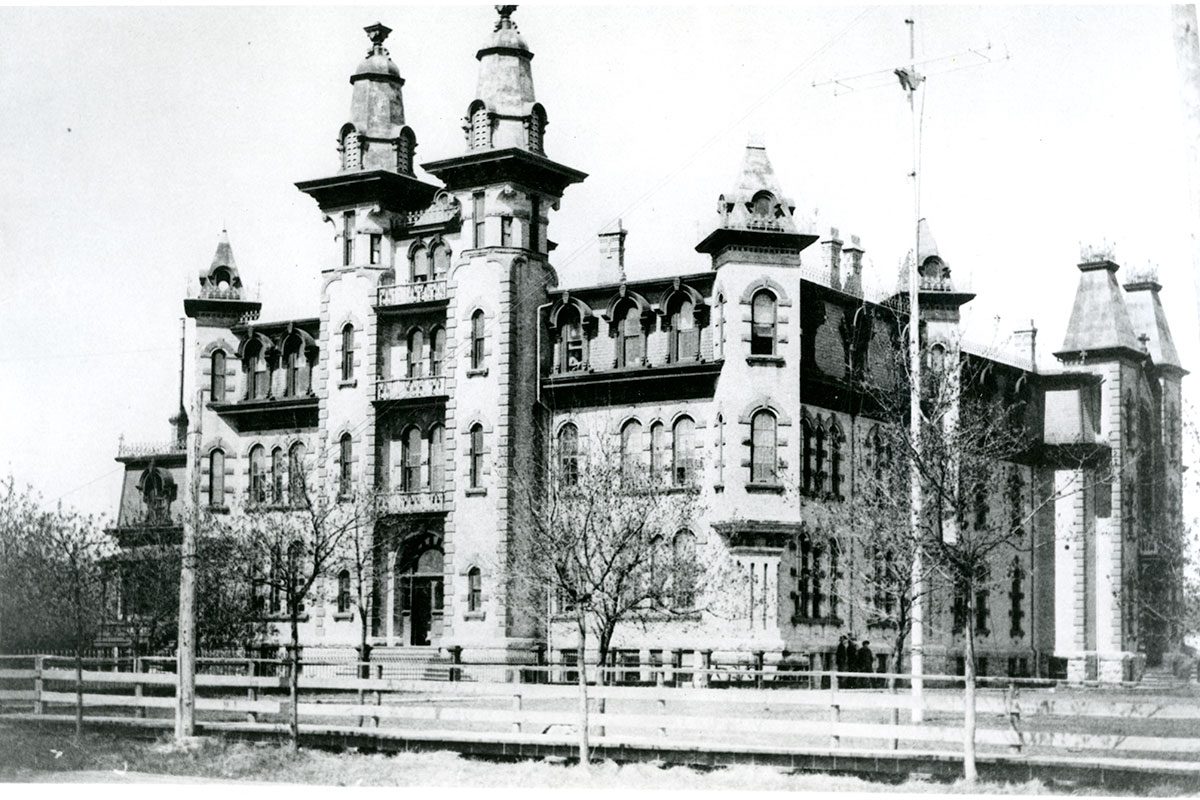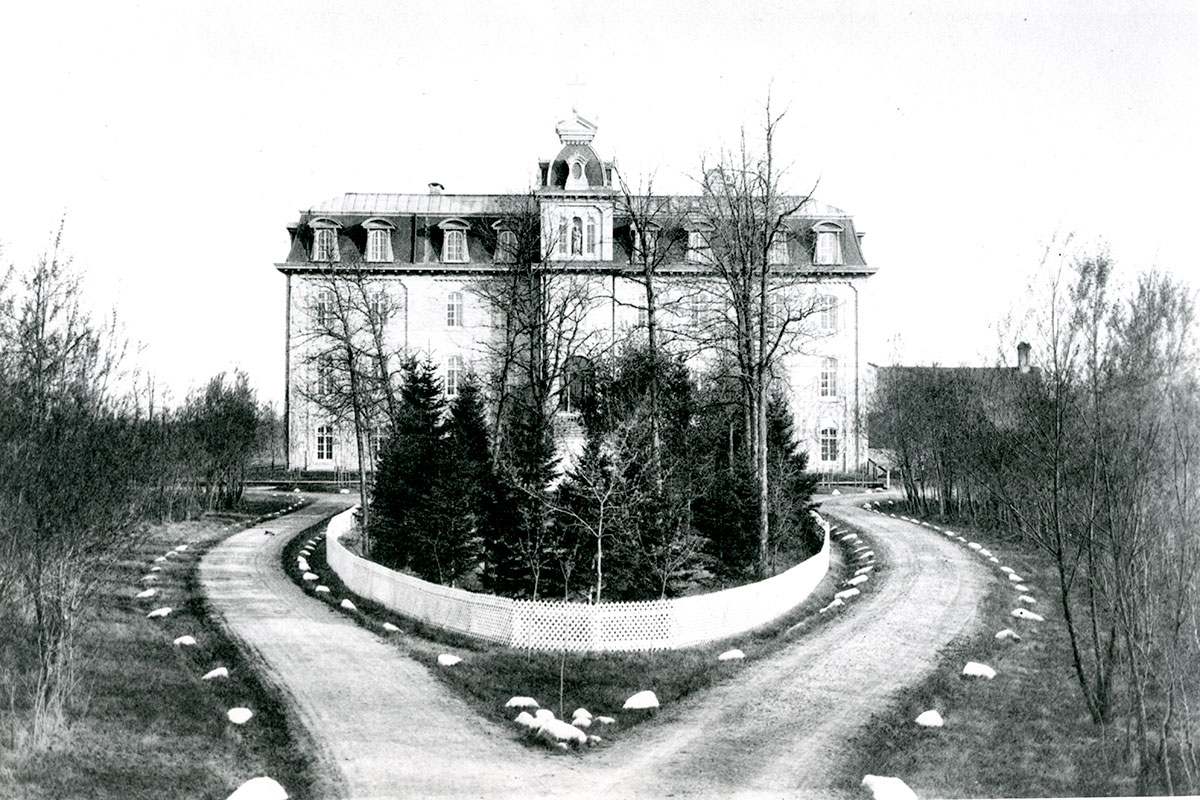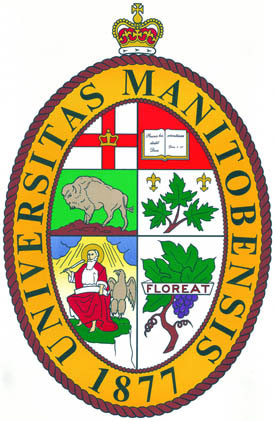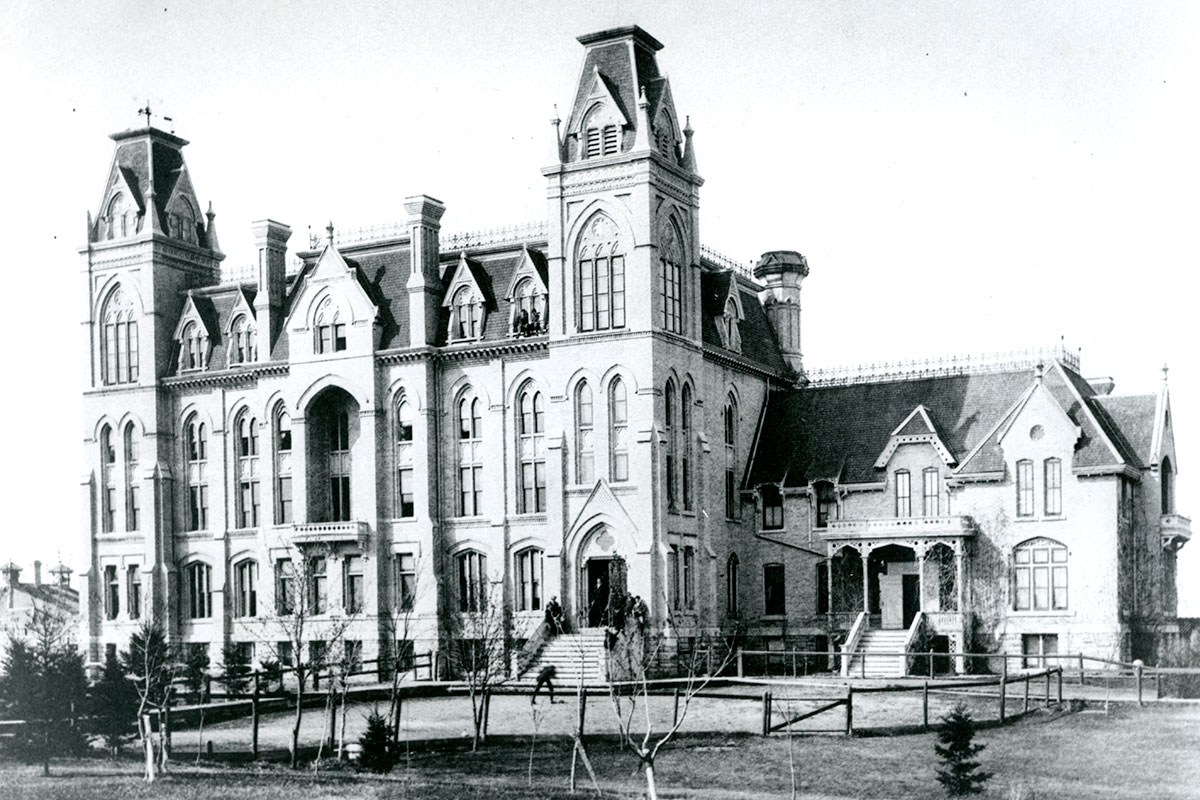
Manitoba College in 1900. // Photo from Archives & Special Collections
The Unique University of Manitoba
In 1892, British magazine The National Review published a lengthy article about the recently-established University of Manitoba. At the time, many of the magazine’s readers would’ve been unfamiliar with the distant Manitoba, so the idea of a new university rising from the prairies of Western Canada made for compelling reading.
In retrospect, the article, titled “The Unique University of Manitoba,” provides wonderful (and sometimes anachronistically humorous) insight into the origins of the U of M.
To celebrate the U of M’s early days from 140 years ago, we break down some of the more interesting tidbits from the article.
Winnipeg becomes a “University town”:
The youngest Canadian university is that founded amidst the prairies of Manitoba. Few of the new communities rising in Western America have been able, within seventeen years of their first State or Provincial organization, to attain so favourable an educational status as Manitoba. No doubt, bearing in mind the ancient seats of learning with which we are familiar, it seems strange to speak of so recent a candidate for admission to the sisterhood of metropolitan municipalities as Winnipeg ranking as a “University town.”
The Fur Trader’s Library:
Manitoba’s isolation created a climate where an institution of higher learning developed organically from available resources and formalized through the cooperation between institutions already present in the area.
Assiniboia (as the Hudson’s Bay Company called their Red River settlement of 12,000 souls all told,) had a public library left by an old fur-trader, Peter Fidler, many years ago, and its volumes were well perused. The Hudson’s Bay Company gave grants to assist struggling schools. A bequest by another fur-trader afforded some £300 a year, which, supplemented by as much more from other sources, sufficed to give subsistence to the episcopal bishop, living after as severe a rubric as a Culdee missioner, who claimed the vast territory of Rupert’s Land as his see, with about one-half of the Red River settlers as his parishioners.
Swarthy Parishioners:
The writer of the article had some observations on the inhabitants of the Red River Settlement:
Somewhat less than one-half of this Red River community, with swarthy faces, followed the faith of their French ancestors… and were under the rule of a resident Bishop of the Church of Rome.
Swarthy or not, the inhabitants of Red River early on had understood the value of education.
So early as 1818 the first Romish priests established a school where “ the humanities ” were taught. This grew into a foundation which has an honourable record as St. Boniface College.

St. Boniface College in a photo from 1900. // Photo from Archives & Special Collections
Manitoba Growing in Recognition:
With the impetus of religious denominations, efforts were made to coordinate formalized higher education. This was good, because Manitoba was actually becoming known around the world.
Since 1871 Manitoba, hitherto unknown, has become a household word, even across the Atlantic, as affording a desirable field for emigration. During the subsequent seventeen years of increasing population, the three colleges have received more attention, and have grown in importance. It was about the year 1875 when the colleges, individually, were beginning to consider that perilous point in higher education, of asking the Legislature to grant the power of conferring degrees, that wiser counsels prevailed, and an effort was made to secure such co-operation as might be possible among the colleges
The University of Manitoba “Experiment”:
The article described how Manitoba seemed a perfect place to attempt an “experiment” in creating a flagship university on the prairie.
Side by side in charitable, social, and public matters those of antagonistic religious views can sit and co-operate for the general good. Why not try the experiment of a single provincial university? … Accordingly, in the spring of the Session of 1877, the Act constituting a provincial university was passed by the Manitoba Legislature.
The first regular meeting of the Council was held on October 4, 1877, with “much anxiety,” since it was believed that creating a university so soon after Manitoba became a province may have been rushing things. There was even some worry that there would not be “a sufficiency of students.”
Mental and Moral Sciences:
A variety of courses were taught at this young institution, and there was considerable debate among faculties as to the importance of their various fields of study:
The four courses of classics, Mathematics, Natural Science, and Modern Languages, have no difficulty in their harmonious working; but [the course of] Mental and Moral Sciences… may well illustrate the manner in which difficulties in the way of the University have been overcome by patience and fair-mindedness. The leading departments of philosophy were sketched out and accepted by both parties. It was found that, whilst there was a great diversity of authors, the subjects of study were largely the same. It is true that in the department of Ontology the field of medieval discussion was regarded as very much more important by one side than by the other; but, on the other hand, very recent problems of the class represented by Dr. Carpenter in his Mental Physiology were held by the English side to be worthy of notice. Certain concessions in these two directions were then made by both parties, and no doubt the golden mean which was arrived at affords a comprehensive and useful course to the average honour student in that department.
The University Seal:
The article detailed how the University’s seal was designed and created:
A committee had been appointed by the University to bring in the design for a seal. The committee brought in a fully elaborated sketch; but the emblems upon it were not satisfactory to an element in the Council.

The University of Manitoba seal.
After a short, good natured discussion, the design was referred back and the committee enlarged. The committee, put on its mettle, at length laid aside the old design entirely, and adopted a seal emblematic of the constitution of the University. A quarter was given to each college then affiliated, and the vacant quarter was filled up with the Provincial arms. Accordingly, the seal of the University of the Prairies now contains the Government shield, with the buffalo prominent upon it; the St. Boniface emblem, consisting of an open Bible, with inscribed on its pages “Pueris his dedit Deus scientiam,” the whole supported by the maple leaf between two fieur-de-lis,- St. John College arms, being St. John and the eagle; and Manitoba College device, a fruitful vine, crossed by the motto “Floreat.” The whole shield is surmounted by the Crown, and is surrounded by the designation “Universitas Manitobanensis.”

St. John's College in 1900. // Photo from Archives & Special Collections.
The Isbister Legacy:
Of great importance to students applying for admission to the University of Manitoba today is Bench’s laudation for Alexander Kennedy Isbister, who gave a large bequest that continues his legacy today.
The name of A. K. Isbister will be one held in honour by the University of the Prairies. Not only did the testator leave his large and excellent library to the University, but also a sum of £17,000 in trust for the establishment, after the payment of one annuity, of a scholarship fund. The University is in a position to offer, as the results of this Isbister bequest, at its examination in May of every year, £800 in scholarships to successful students.
Building a University:
In addition, the University greatly benefited from land sales that added to the development of its campus. And, as more buildings were added, there was an expectation that university staff would benefit themselves from such luxurious surroundings.
Further, the Dominion and Provincial Governments have jointly agreed to bestow 150,000 acres of unoccupied land in the province upon the University. This will probably be converted as soon as it can be sold at £1 the acre, thus making a splendid endowment of £150,000 for University and college education. The Provincial Government at present provides quarters for the University meetings in the Government buildings, and degrees are conferred in the Hall of the Legislative Assembly of the Province. Since the establishment of the University the colleges have been greatly stimulated, and, largely by local effort in the city of Winnipeg, have been assisted in their work. The colleges have each erected commodious and substantial buildings—an ornament to Winnipeg and its environs,—and the united cost of these buildings has been £25,000. No doubt, as the emoluments of the University increase, each college will be able to augment the efficiency of its staff’.
A Successful Experiment:
As an “experiment,” the article considered the creation of the University of Manitoba had been very successful.
As an experiment, at least, the University has worked well during the eleven years of its existence, and has done much to elevate the standard of education of the colleges. The Earl of Dufferin, the Marquis of Lorne, and the Marquis of Lansdowne, were forcibly struck on their gubernatorial visits to Manitoba by the harmony prevailing among all classes, and expressed more surprise at the working out of the problem of the Higher Education in this Prairie experiment than even at the extraordinary vegetable products of the land of “illimitable possibilities.”
A Common Bond:
The article closed with comments on the character of the University of Manitoba:
Political and social results of the most important character have been brought about through this and kindred agencies in the North-West. The absence of party and religious feuds in the Province has been one of its marked characteristics. The co-operation of all parties, nationalities, and creeds in a Province so heterogeneous in the character of its peoples as Manitoba has been of greatest value. Even the pursuit of knowledge, so frequently a divisive agency, has proved a bond of concord.
In effect, if Manitoba could get beyond political and religious disagreements, the pursuit of knowledge would benefit. Perhaps that’s a sentiment that is as relevant today as in the 1800s.
The University of Manitoba is celebrating our 140th anniversary this year, in conjunction with Canada’s 150. Follow the conversation and hear more about our history, people and celebration events at #UM140






